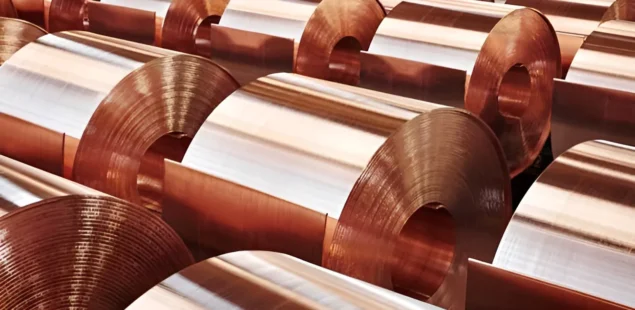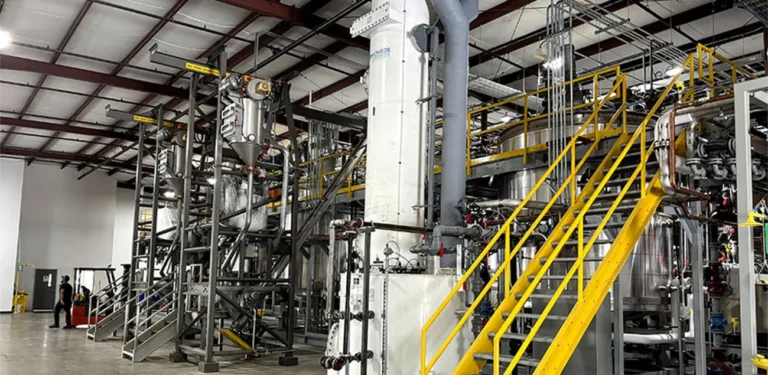
The physical and chemical properties of aluminium
Aluminium is one of the most versatile substances used in modern industry, valued for its light weight, malleability, resistance to corrosion, and conductivity of heat. Having the density value of only 2.7 g/cm³, aluminium is about one-third lighter than steel, hence making it especially suitable in applications where mass reduction is critical.
Its thin oxide film gives the metal excellent resistance to corrosion, which is enhanced further by treatments like anodising. Aluminium also has high reflectivity with the ability to reflect light in the visible spectrum to as high as 92%, thus explaining its large use in insulation products as well as the foils used in packing.
Chemically, pure aluminum is a soft and malleable metal, but the addition of alloying elements like copper, zinc, magnesium, or silicon creates materials with high strength-to-weight ratios that are important for aerospace and structural applications.
Household Uses of Aluminium
In everyday life, aluminium foil is a staple for food storage due to its barrier properties against light, oxygen, and moisture. Its reflective and heat-resistant nature makes it ideal for cooking and wrapping, maintaining food freshness while withstanding high temperatures.
Aluminium is used for making cooking utensils like pans and baking trays thanks to its thermal conductivity and non-toxic nature. It heats evenly and cools quickly, improving cooking efficiency. It's also a safe material, provided it’s not scratched or degraded, which could expose users to trace metal leaching.
Aluminium is also prominent in packaging, from drink cans to laminated food wrappers, due to its lightweight, recyclability, and ability to preserve content. Moreover, used aluminium canopies, boats, ladders, and doors often retain value due to aluminium’s durability and recyclability.
Industrial and Construction Applications
Aluminium in construction is utilized in roofing sheets, window frames, doors, and composite panels. The corrosion-resistant and anodised coatings of the metal render it apt for external environments without any further protection.
Aluminium composite panels are widely used for façade cladding, owing to their lightness and modern look. Aluminium's strength-to-weight ratio adds to the functionality of ladders and scaffolding made of this metal, thus making transportation easier and enhancing safety during handling operations.
Beyond buildings, aluminium is integrated into industrial machinery and components. Its adaptability through casting and extrusion processes enables the production of custom shapes for infrastructure and manufacturing.
Electrical conduction
Despite the high conductivity of copper, aluminium is often used for making electrical wires and transmission lines because of its more favorable cost-to-weight ratio. Although aluminium has about 60% of the conductivity of copper, it has only 30% of the weight, thus allowing for longer spans and lighter structural components.
This advantage explains the reason why aluminium and copper are used for electrical transmission—aluminium, in particular, for overhead power lines, and copper for cabling in highly populated urban regions. Aluminium conductors also exhibit resistance to environmental degradation, thus requiring less maintenance in the long run.
Its high heat conductivity places it as the foremost choice in applications like radiators, air conditioning devices, and heat exchangers. In addition, its non-magnetic nature makes aluminium suitable to be used in sensitive electronic environments.
Aerospace and transportation alloys
Aluminium alloys have significant applications in aircraft, cars, boats, and trailers. Specific grades, like the 7075 and the 2024 aluminium alloys, have high tensile strength with the maintenance of lightweight profile, which is important to achieve improved fuel efficiency and payload in the aviation industry.
In marine applications, used aluminium boats for sale maintain their value due to the corrosion-resistant nature of aluminium in saltwater conditions. The same applies to aluminium trailers and ute trays, which offer reduced towing weights and a longer life.
Automobile producers have increasingly used aluminium components to meet fuel efficiency and emission-mitigating requirements. In engine blocks, chassis parts, as well as in body panels, aluminium plays an important role in balancing efficiency with performance.
Surface modifications: anodization, coatings
For enhanced performance, aluminium undergoes surface treatments, like anodizing, that thicken the protective oxide layer, giving a boost to wear resistance as well as coloring potential. Anodized aluminium finds widespread use in architectural and consumer electronic applications because of its aesthetic appeal and durability.
Powder coats, lacquers, and ceramic coats work to protect the aluminium against mechanical wear and climactic influence. Such surface finishes increase durability while at the same time offering considerable design flexibility, which is especially important in today's architectural and industrial designs.
Chemicals and industrial materials.
Aluminium compounds have significant industrial value. Aluminium chloride is used in petrochemical production, aluminium sulphate in water purification, and aluminium hydroxide in pharmaceuticals as an antacid and vaccine adjuvant.
Aluminium oxide, or alumina, is a critical ingredient in both abrasive materials and refractory ceramic products. In addition to this, it is used prominently in the production of synthetic sapphires and as a precursor to the extraction of metallic aluminium via the Bayer process.
In construction, these compounds are used for waterproofing, fire retardants, and paint additives. In personal care, aluminium salts serve as active ingredients in deodorants and antiperspirants.
Recycling and Sustainability
Aluminium is considered to be one of the world's most recyclable products. Recycling aluminium can recover as much as 95% of the energy required to produce it from bauxite. This improvement in energy efficiency means decreased carbon emissions and lower environmental impacts.
Recycling processes do not lower the quality of aluminum, making it reusable in the long term. As a consequence, about 75% of all the aluminum ever produced is in current use.
Used aluminium sheets, cans, trailers, and doors maintain a strong secondary market, further incentivizing collection and reuse. Industries and governments increasingly emphasize aluminium recycling as a cornerstone of circular economy strategies.
FAQ
What are 10 uses of aluminium?
- Kitchen foil and packaging
- Kitchen utensils and cookware
- Projects related to electrical circuits.
- Aerospace structures
- Automotive exterior parts
- Door and window frames.
- Roofing and cladding
- Drinking containers
- Boats and trailers
- Heat exchangers and radiators
Where is aluminium mostly used?
It is most commonly used in the fields of construction, transport, and packaging. In addition, its ubiquitous uses in consumer durables, aviation, and power distribution are mostly due to its versatility, resistance to corrosion, and recyclability.
What is aluminum material used for?
It is utilized in a varied range of uses, ranging from lightweight structural elements to electrical conductors, to household foil as well as pharmaceuticals. Its applications reach from important industrial sectors to common products one will encounter daily.
Why is aluminium used?
Aluminium is used because it has desirable characteristics such as being light, durable, non-corroding, non-toxic, and high in conductivity. Its recyclability further makes it an economical as well as environmentally friendly choice in many industries.



